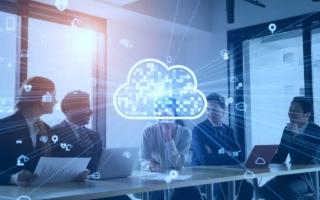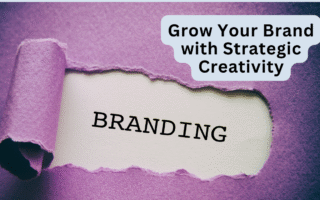Modern pension administration demands precision, automation, compliance, and seamless data connectivity. As organizations evolve, the need for pension administration software systems that integrate smoothly with other mission-critical platforms has become non-negotiable. The most advanced systems today rely on a network of real-time integrations that improve accuracy, enhance efficiency, and elevate the overall member experience. Identifying these integrations helps employers, administrators, and financial institutions adopt solutions that perform beyond basic functionality.
Below is a comprehensive and deeply detailed analysis of the key integrations every organization should prioritize when evaluating or upgrading pension administration software.
HRIS and Payroll Integrations for Real-Time Data Synchronization
Why HRIS Integrations Matter
Direct and automated integration with Human Resources Information Systems (HRIS) ensures that member data is always accurate and up-to-date. Real-time synchronization eliminates duplicate entry, reduces administrative labor, and minimizes errors that can lead to compliance risks.
Key HRIS platforms often integrated include:
- Workday
- SAP SuccessFactors
- Oracle HCM
- ADP Workforce Now
- Ceridian Dayforce
These integrations make it possible to automatically sync data such as:
- Employee demographics
- Compensation adjustments
- Status changes
- Contribution eligibility updates
- Termination events and retirement triggers
Payroll Integration for Accurate Contributions
Payroll integrations empower pension software to automatically calculate, deduct, and allocate contributions without manual adjustments. This results in:
- Immediate validation of contribution data
- Reduction in miscalculations
- Automated reconciliation workflows
- Faster posting of pension credits
Organizations benefit significantly when their pension administration system seamlessly connects with leading payroll providers, providing unified reporting across departments.
CRM Integrations for Enhanced Member Experience
Connecting Pension Systems with CRM Platforms
An effective pension administration platform should integrate with major CRM systems like Salesforce, HubSpot, or Microsoft Dynamics 365. This ensures a consolidated view of member interactions, helping administrators deliver more personalized support.
Business Advantages of CRM Connectivity
- Unified member history: All inquiries, updates, and support requests captured in one place
- Automated workflows: Triggered notifications for enrollment, vesting, or plan updates
- Faster service delivery: Improved visibility into member needs
- More accurate reporting: CRM insights that help analyze behavior patterns and forecast needs
These integrations elevate the member experience by enabling service teams to provide faster, more accurate, and more proactive support.
Banking and Payment Gateway Integrations
Streamlining Pension Payments
Modern pension systems must integrate with secure banking and payment gateways to ensure timely, transparent, and compliant transactions. This includes integration with:
- ACH networks
- SWIFT systems
- Electronic Funds Transfer (EFT) platforms
- Digital disbursement tools
Key Capabilities Enabled
- Automated pension disbursement
- Real-time payment tracking
- Secure beneficiary validation
- Error-free reconciliation
- Direct integration with financial institutions
Such integrations eliminate manual processing, reduce fraud risk, and ensure that retirees receive payments accurately and on time.
Actuarial and Financial Modeling Tools
Why Actuarial Integrations Are Essential
Actuarial calculations are at the heart of pension administration. Integrating with actuarial modeling tools ensures precise forecasting and valuation. These integrations support:
- Liability calculations
- Funding ratio analysis
- Risk modeling
- Scenario testing
- Compliance reporting
Real-time data exchange between the pension platform and actuarial systems improves both accuracy and speed, reducing the risk of outdated assumptions or misaligned reporting.
Document Management System (DMS) Integrations
Centralized Document Storage for Compliance
Compliance requirements make document storage and retrieval crucial. Integrating with leading DMS solutions like SharePoint, DocuWare, or Box ensures that all member-related documents are:
- Secure
- Accessible
- Version-controlled
- Indexed for quick searching
- Auditable
Automated Document Generation
Integration with document automation tools allows pension software to generate:
- Benefit statements
- Enrollment packages
- Annual notices
- Regulatory reporting documents
This ensures that the organization remains compliant while improving workflow efficiency.
Identity Verification and Authentication Integrations
Strengthening Security Across the System
As cyber threats increase, integrating with robust identity management platforms is critical. These integrations add layers of protection and ensure compliance with security regulations.
Essential integrations include:
- Multi-factor authentication (MFA) platforms
- Single Sign-On (SSO) providers (Okta, Azure AD, Ping Identity)
- Identity verification services for member onboarding
- Role-based access control (RBAC) tools
These integrations ensure that sensitive member data remains protected while enabling frictionless access for authorized users.
Government and Regulatory Portal Integrations
Automating Compliance and Reporting
Modern pension systems must easily link with government platforms to streamline mandatory reporting. These integrations reduce administrative work while ensuring full regulatory alignment.
Examples include:
- Tax authority portals for automated filings
- Social security data exchanges
- Regulatory reporting hubs
- Electronic record submission systems
By automating these exchanges, pension software minimizes errors and ensures consistent compliance with evolving regulations.
API Integration Frameworks for Custom Connectivity
Flexible Architecture for Future-Proofing
A modern pension administration system must offer a robust API framework that allows organizations to build custom integrations as needed. This ensures long-term adaptability, even as internal processes or external partners evolve.
Key API Characteristics to Look For
- REST- or GraphQL-based architecture
- High-level security encryption
- Full documentation for developers
- Scalable data exchange capabilities
- Support for webhooks and event-driven workflows
Organizations with strong API-enabled pension systems benefit from seamless connectivity with internal tools such as:
- Analytics dashboards
- HR bots
- Data warehouses
- Enterprise workflow automation tools
APIs essentially future-proof the pension platform, making it adaptable in any technical environment.
Analytics, BI, and Data Warehouse Integrations
Data-Driven Strategy for Pension Management
Integrating the pension solution with analytics platforms empowers organizations to make informed strategic decisions. Connectivity with BI tools like Power BI, Tableau, or Looker enhances capabilities in:
- Operational performance analysis
- Member engagement insights
- Predictive analytics
- Investment performance tracking
- Compliance trend reporting
Benefits of Data Warehouse Integrations
- Centralized storage of historical and real-time data
- Improved cross-department reporting
- Stronger audit trails
- Enhanced forecasting models
Together, these integrations ensure that pension administrators have access to powerful insights that raise operational performance and long-term fund security.
Communication and Notification Integrations
Automating Member Communication
Integrations with communication platforms such as Twilio, SendGrid, Slack, or Microsoft Teams allow pension systems to deliver automated and personalized messaging.
Supported Communication Types
- Email notifications
- SMS alerts
- Push notifications
- Chatbot support
- Secure portal messaging
Automated communication helps ensure members stay informed about contributions, vesting, deadlines, plan changes, and benefit updates.
Conclusion: The Value of Choosing an Integration-Ready Pension Platform
Organizations evaluating pension administration software must prioritize a system’s ability to integrate with other critical platforms. HRIS, payroll, financial, actuarial, CRM, security, and analytics tools work together to create an ecosystem that improves efficiency, accuracy, compliance, and member satisfaction.
Choosing a pension solution with powerful integration capabilities ensures long-term scalability, stronger data governance, and streamlined end-to-end administration.




